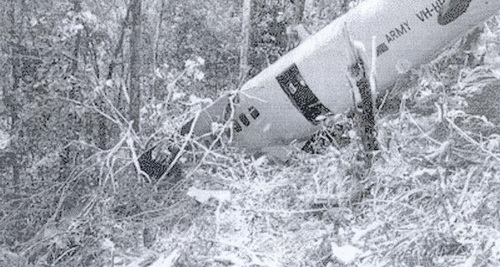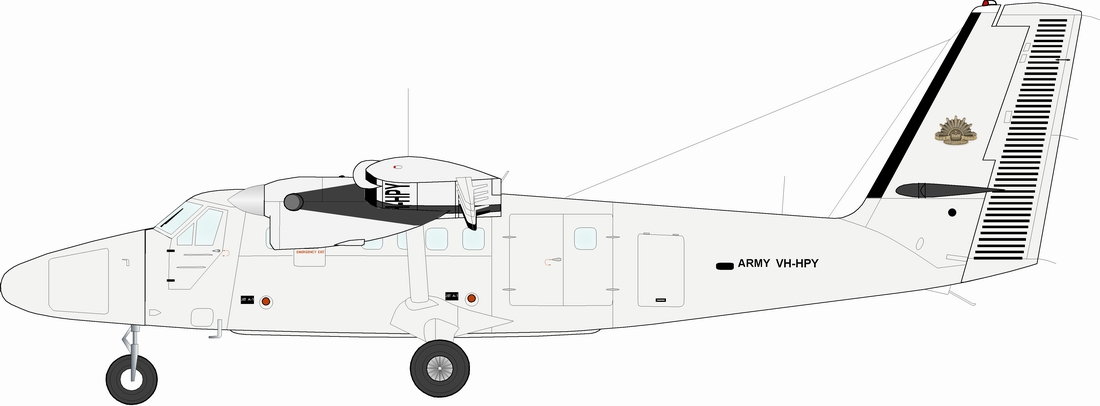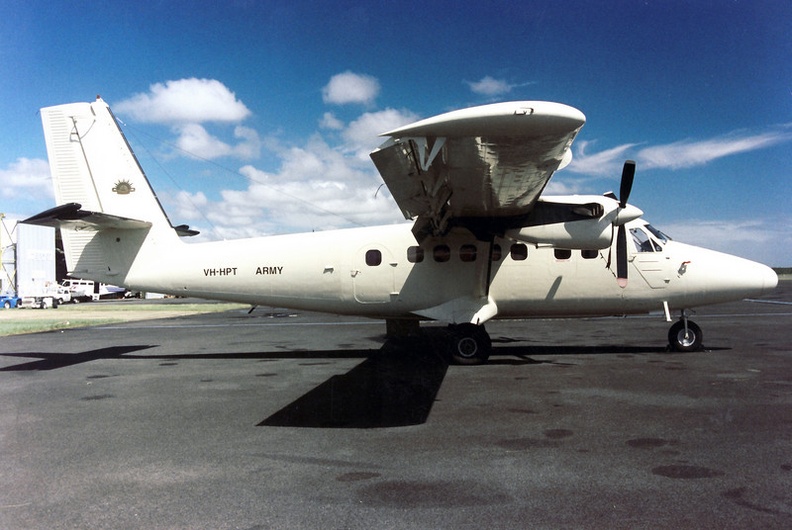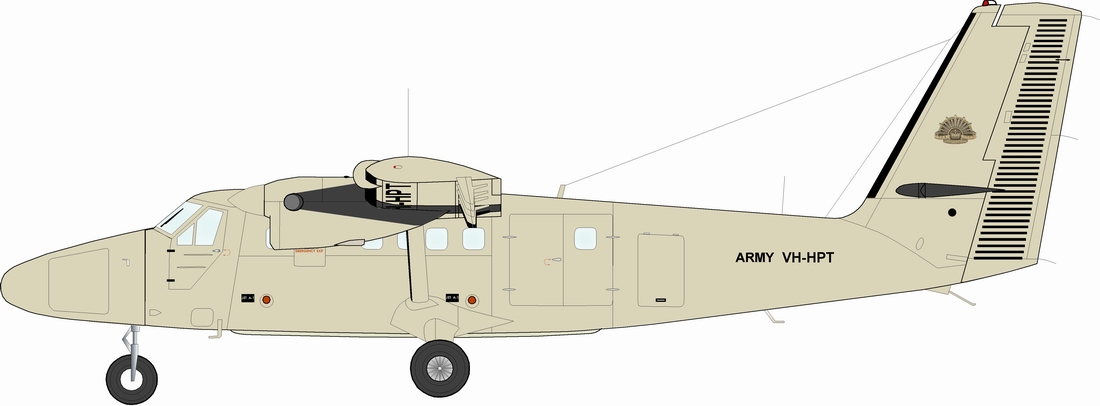
The wreck of VH-HPY at it's crash site in P.N.G
by Steve Mackenzie

The ADF leased three DHC-6 Twin Otter airframes in the 1990s for support duties to replace the AGF Nomads they previously used. Initially in 1996 they leased two airframes VH-HPT and VH-HPY from Hawker Pacific (local agents for the DHC-6). Unfortunately VH-HPY did not last long, the ADF crashing it during training in PNG in 1997 (more details given later), the ADF then obtaining VH-OHP to replace it. The first two were painted in an overall off White scheme (Hawkeye says 'Light Ghost Grey' FS 36375). VH-HPT and VH-OHP were later repainted overall in a 'Sand/Buff' colour. See individual notes for other painting details.
VH-HPY
Papua New Guinea, nr Simbi, 9.11.97 on third day of ops, VH-HPY was crashed in a valley due to bad route planning and procedures, 4 injured. From the Accident Investigation Report Summary (full report is available on the ADF Serials site):
The crew were operating a de Havilland Canada DHC-6 Twin Otter aircraft in Exercise Highland Pursuit 2/97. The purpose of the exercise, which was conducted by No. 173 Surveillance Squadron, 1st Aviation Regiment, Australian Army, was to provide tropical mountainous flying training in Papua New Guinea. There were three trainees and one training pilot on board the aircraft.
On Sunday, 9 November 1997, the third day of flying operations in Papua New Guinea, the crew were conducting a flight from Madang and return via a number of airstrips in the central highlands. When haze and cloud prevented them flying the flight-planned direct track between the Koinambe and Simbai airstrips, they decided to fly north-west via the Jimi River valley and one of its tributaries. Two of the trainees were occupying the cockpit seats, one as flying pilot and the other as navigating pilot using a 1:1,000,000-scale chart. When the crew turned the aircraft to follow a tributary off the Jimi River, the training pilot was in the aircraft cabin.
A few minutes later, their discussion regarding the progress of the flight attracted the attention of the training pilot. By this time, however, the position of the aircraft in the valley, and its available performance, were such that an escape from the valley was not possible. The aircraft collided with trees before impacting steeply sloping ground.
It was subsequently established that when the crew turned from the Jimi River, they entered the wrong valley. Calculations based on the manufacturer's performance data showed that the aircraft did not have sufficient performance to outclimb the increase in terrain elevation from the Jimi River valley to cross the Bismarck Ranges via this valley. There was a low level of experience and corporate knowledge within the Army regarding the operations of fixed-wing aircraft such as the Twin Otter in tropical mountainous areas.
Against this background, deficiencies were identified in the planning and preparation for the exercise, including risk assessment and the selection and briefing of the training pilot.
At the time of it's crash VH-HPY was still in the 'White' scheme. The airframes was recovered but never repaired (the wings had been ripped off by trees during the crash, which probably helped survival of the crew). Note some of the marking details below are based on assumption that it was the same as VH-VPT as no other photos of this airframe are known.

VH-HPT
The VH-HPT airframe was acquired at the same time as VH-HPY and was initially painted in the same White scheme, with other details being the same per this photo.

Later VH-HPT was repainted in a light Sand/Buff scheme (by co-incidence Taubmans Oak Buff T12 60.C8 is a very close match - see the net). There is a good image at http://www.aussieairliners.org/dhc-6/vh-usw/vhtusw.html of the scheme (this site does not allow reproduction of their images). Also see the extensive walkaround of this airframe in this issue.

Hit next to go to the 2nd page on ADF DHC-6 Twin Otters.